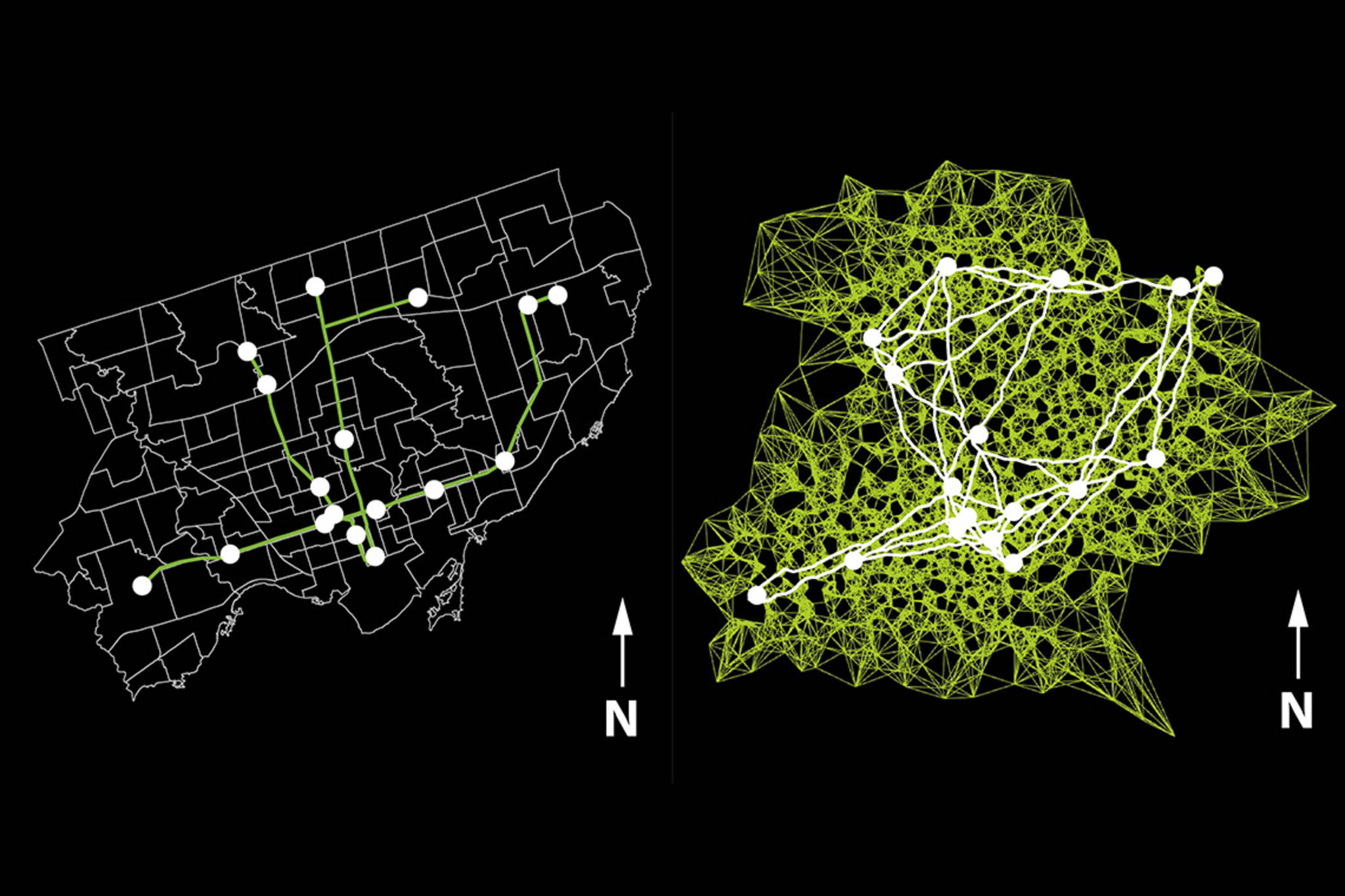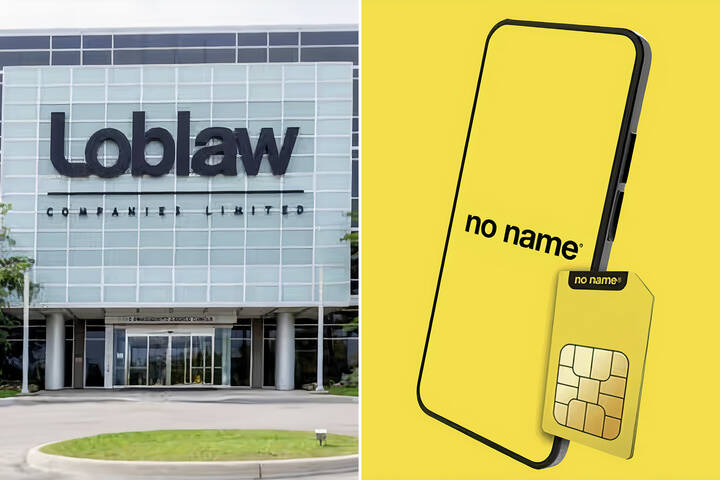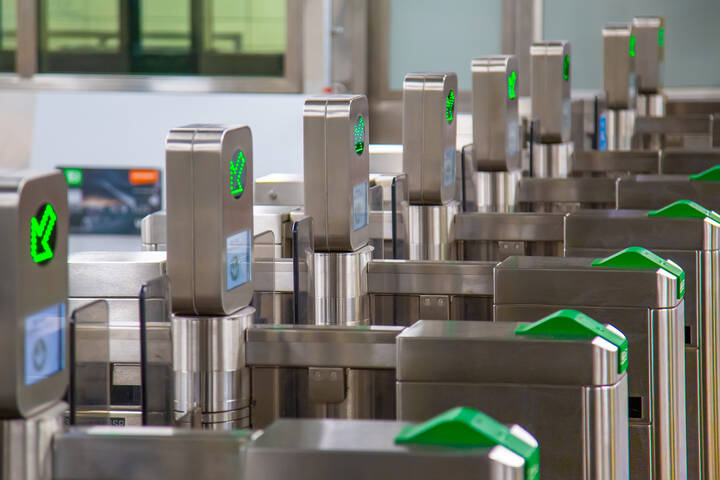
Toronto researchers are using bright green slime to improve the TTC subway network
Step aside, artificially intelligent robots: An ancient type of slime is proving adept at creating efficient transit networks, threatening the jobs of transportation infrastructure engineers everywhere.
Okay, that's an exaggeration — slime isn't going to take any human jobs, but it could help architects perform some key tasks in less time, and with better precision than what they'd be able to do on their own.
"Humans aren't the only ones dealing with the challenge of designing efficient, resilient networks," said Raphael Kay, a master's candidate in U of T's Faculty of Applied Science & Engineering, to the university in a piece published this week.
"In architecture school, we were taught by human architects the lessons of past human architecture. But the slime mould has been shaped by hundreds of millions of years of evolution, so in that sense, they are far more experienced at solving certain architectural problems than we humans ever could be."
Stepwise slime mould growth as a template for urban design https://t.co/WyhfvGiG6v pic.twitter.com/T2wT8asjq6
— Winson Tang (@winsontang) January 28, 2022
Kay and his colleagues, including associate professor of materials science and engineering Ben Hatton and fellow master's student Anthony Mattacchione, have used a type of slime mould called Physarum polycephalum to "generate networks that describe two existing systems of urban infrastructure at two scales" and "map out the most efficient routes between stops on specific maps and grids."
Those existing systems were the TTC's own subway network and food sources at Canada's Wonderland in Vaughan.
"We obtained spatial data of the four subway lines and 74 stations that make up the underground subway network in Toronto, Canada, and we selected seventeen core stations to represent network attractors," write the researchers in a piece published by the journal Scientific Reports earlier this week.
"We modelled a network to represent Physarum growth across the seventeen core subway stations, and compared modelled with built network performance."
Using both an actual slime mould (fed by oatmeal) and a computer model based on how the slime builds networks, the team was able to generate a network that, in the case of Wonderland, "for the same cost, would provide a travel time 10 per cent faster than the real-life network and 80 per cent more resilient in the event that one of the segments gets blocked."
"For the subway, the most striking finding was that for a network with the same travel time as the real thing, our network was 40 per cent less susceptible to disruption," noted Kay.
Are you smarter than slime mould? Researchers from @uoftengineering used ‘virtual slime mould’ to design a TTC subway network less prone to disruption. @tylereirving https://t.co/ZUjYAyZnS1 pic.twitter.com/brIQc8KdUG
— Chris Sasaki (@chrissasaki) January 27, 2022
So... how did slime do all that?
According to researchers, Physarum polycephalum is a single-celled amoeboid organism that "grows as a greenish-yellow system of veins. These veins form a tubular network that is optimized to transfer nutrients efficiently throughout the entire organism."
The way they find nutrients and grow is by "foraging" broadly over an area and then refining their network to optimize for transport of the nutrients.
"Researchers believe the slime mould's efficient organic structure could provide a model for optimizing other networks," writes the University of Toronto. "Including those designed to move people and goods around a city."
The school notes that the researchers aren't suggesting that the TTC subway network or any networks be ripped up and rebuilt — only that their slime-based model could offer insights on the best locations for expanding or creating new systems in the future.
"Raphael and Anthony developed a really useful tool, which I think is pretty accessible to anyone," said Hatton of the students. "You could imagine it being used not just for transportation networks, but freight networks or energy networks. It turns out they are trying to optimize networks in the same kind of way as the slime mould."
Raphael Kay/University of Toronto
Latest Videos
Latest Videos
Join the conversation Load comments







